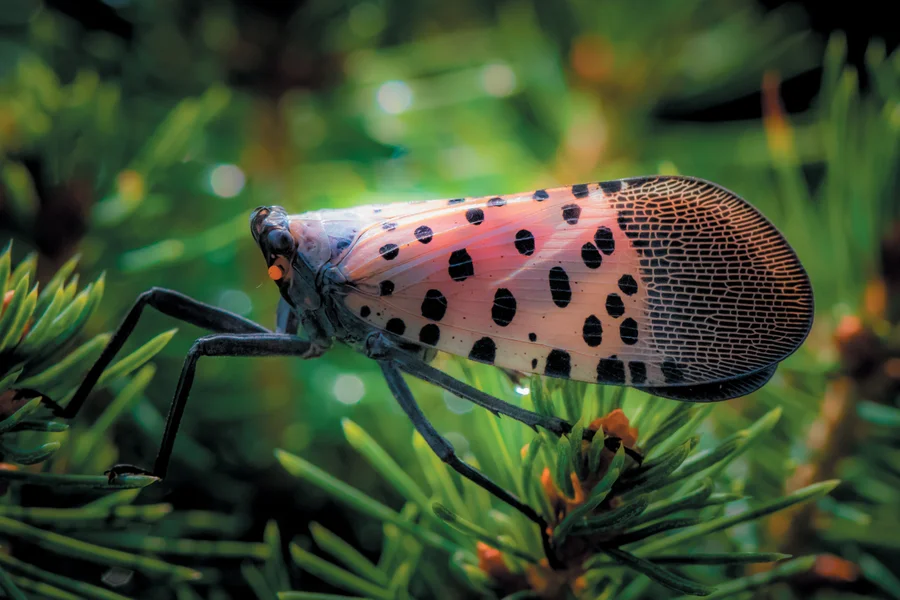Since the indomitable spotted lanternfly began its invasion of the U.S. East Coast in 2014, efforts have been relentless to halt its spread. This pest has ravaged trees, grapevines, and various fruit crops, earning a reputation as potentially the most destructive invasive insect in 150 years, according to Pennsylvania State University. Its excrement, dubbed “honeydew” by entomologists, nourishes sooty mold and attracts stinging insects. Controlling this pest has proven challenging due to its lack of natural predators, with no end to its swarming in sight.
USDA researchers have discovered that lanternflies are drawn to certain vibrations, as reported in the Journal of Economic Entomology. “There was an anecdotal rumor that they were gathering near power lines,” says study co-author Richard Mankin, an entomologist with the USDA Agricultural Research Service. The research team investigated whether vibrations influence the insects’ movements on surfaces. In a lab setting, they found that the bugs detected and moved towards 60-hertz vibrations, the common frequency of power lines, generated by a speaker, explains Miriam Cooperband, an entomologist with the USDA’s Animal and Plant Health Inspection Service, who designed the study.This reaction hinted that the insects might communicate through surface-transmitted vibrations. Cooperband and her colleagues are now studying the vibrations produced by lanternflies. Understanding these communication signals could be crucial in developing an effective trap. Besides frequencies that attract the lanternflies, “there might be other types of signals that, when applied a certain way, could jam their communication and disrupt mating or even drive them away,” Cooperband says.Numerous attempts have been made to eradicate the spotted lanternfly, but its behavior is unlike other pests typically managed by entomologists, Mankin notes. For instance, lanternfly females and nymphs form large swarms, or aggregations, not directly related to mating, making conventional pest-control methods aimed at disrupting reproduction challenging to apply.”The lanternfly is an unusual pest, and there’s a long way to go to understand all its secrets,” says Brian Walsh, a horticulture educator at Penn State who is also researching effective management strategies. While this new research is promising, it requires further refinement to develop a broadly usable pest-management approach. “I hope that it does work out and that we can develop a scalable tool to lure the spotted lanternfly, providing more than just a localized impact,” Walsh says. “That would be a significant breakthrough in our management efforts, as no such tool currently exists.”
